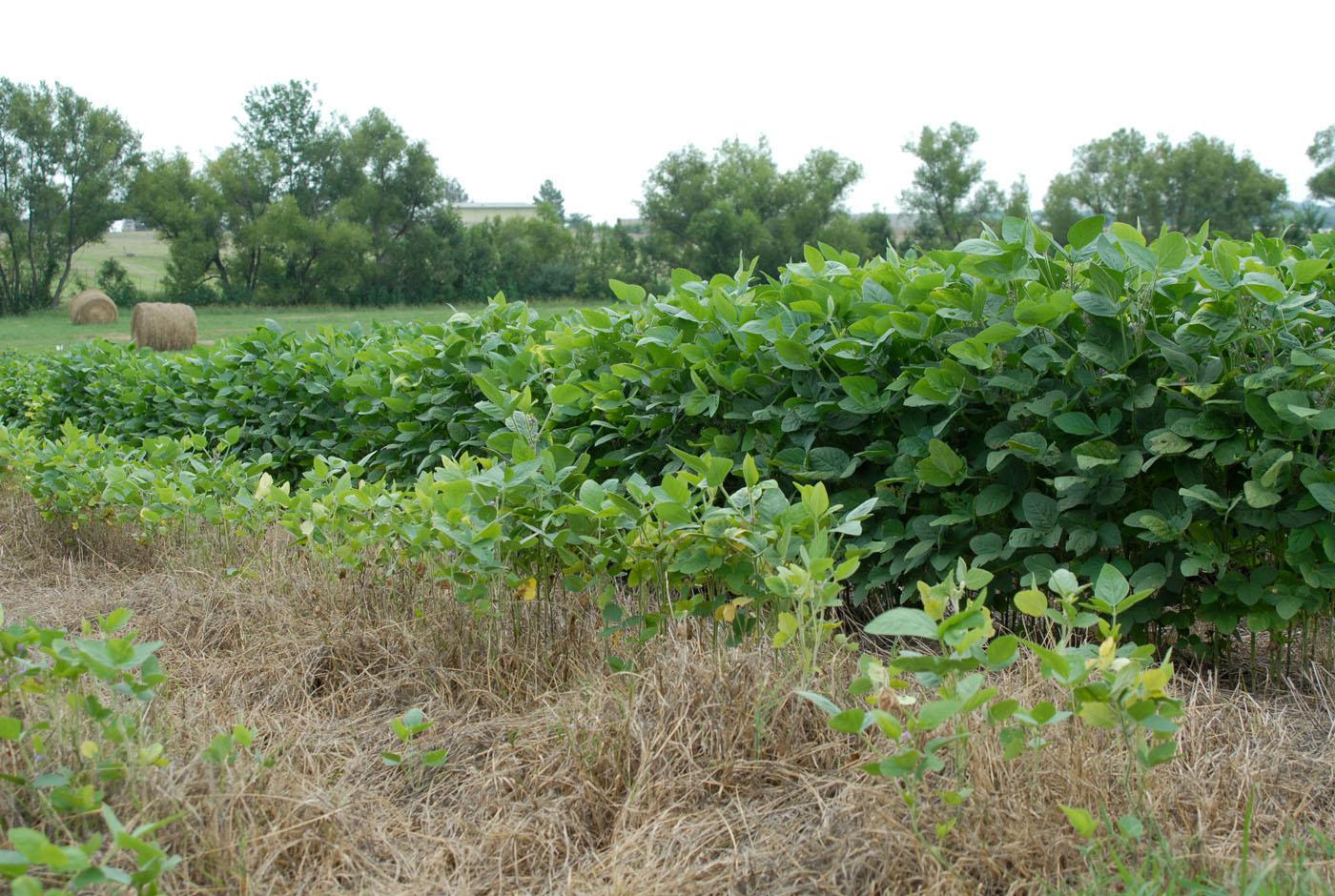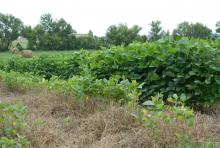Information Possibly Outdated
The information presented on this page was originally released on February 9, 2012. It may not be outdated, but please search our site for more current information. If you plan to quote or reference this information in a publication, please check with the Extension specialist or author before proceeding.
No-till farming opens hills to crop production
MISSISSIPPI STATE – Time, experience and research findings show no-till farming can boost production, prevent soil erosion and transform hayfields and pastures into viable cropland.
Glover Triplett, research professor in the Department of Plant and Soil Sciences at Mississippi State University and the Mississippi Agricultural and Forestry Experiment Station, is an advocate for no-tillage farming, a planting method he has pioneered since the 1960s. Producers who practice no-tillage grow crops without disturbing the soil except at planting, using any residue carried over from previous crops as mulch. Instead of tillage, earthworms and other soil organisms aerate the soil while preserving its structure.
Triplett said today’s surge in commodity prices has created an ideal time for producers to embrace no-till methods. No-till works particularly well on sloping land that is often passed over by buyers and renters looking for cropland acres.
“Land cost in the Hills is lower than in the Mississippi Delta, and one can easily farm with no-till practices on sloping land,” he said. “These fields drain well and will support equipment much better than land that has been tilled, so producers can work more days than in a tilled system.”
Ernie Flint, area agronomist in central Mississippi with MSU’s Extension Service, said no-till may be the best method of farming much of the state’s land, especially in areas with sloping topography. However, fighting age-old traditions prevents many growers from adopting the practice.
“Most people who want to farm have been told that tillage is essential for growing crops,” Flint said. “This opinion has been passed down to them by older farmers, family members and even the lending institutions, where many of the bank presidents are from the old school. Although the acceptance of no-till has improved in recent years, there is still prejudice against those who farm ‘ugly.’”
Flint has helped several growers successfully use no-till and other conservation tillage methods.
“I worked with a grower in 2011 who planted a 350-acre former cattle ranch to soybeans. The soybeans were drilled directly into existing sod from which hay had been harvested prior to planting. The grower applied poultry litter, sprayed the sod with glyphosate and planted with no-till drills,” he said. “I worked with him through our SMART program to select varieties, set the drills, and control pests, diseases and weeds. These beans yielded around 60 bushels per acre, without irrigation on land that no one else wanted to farm until he came along.”
According to 2011 reports, that was nearly 20 bushels per acre more than the average in Mississippi.
Researchers and Extension professionals at MSU, such as Triplett and Flint, combine their experience with scientifically generated knowledge to help producers make the best crop they can while using sustainable practices such as no-tillage.
“We try to figure things out so the farmer doesn’t have to bear the potential loss from experimenting,” Flint said. “We plant different varieties and use different herbicides for weed control and share our findings with producers so they can see that no-tillage works.”
For more information on conservation agriculture and no-tillage, visit http://www.msucares.com.






